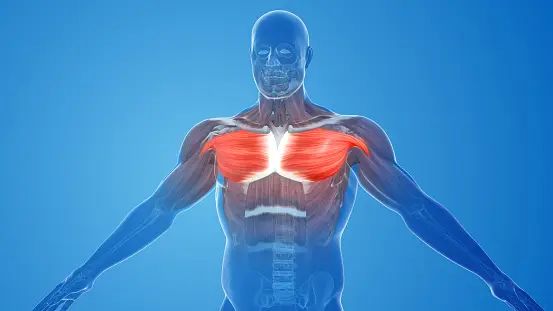Explore the common weightlifting injuries, their causes, prevention strategies, and effective treatments.
Weightlifting is an excellent way to build strength, increase muscle mass, and improve overall fitness. However, it’s essential to approach weightlifting with caution and proper technique to prevent injuries.
Whether you’re a seasoned weightlifter or just starting, understanding the common injuries associated with weightlifting and implementing preventive strategies can make a significant difference in your training journey.
Recognizing Common Weightlifting Injuries
1. The Peril of Back Strain
One of the most common weightlifting injuries is back strain, often affecting the lower back. Improper lifting techniques, especially when lifting heavy weights, can strain the muscles, ligaments, and tendons of the back, leading to back pain and discomfort. Back strain can range from minor muscle sprains to severe disc herniation, causing debilitating pain and limiting mobility. Maintaining proper posture, strengthening the core, and regular stretching can help minimize the risk of back strain during weightlifting.
2. Understanding Shoulder Impingement
Shoulder impingement typically arises from frequent overhead actions in weightlifting. Adapting workout routines is key to managing this condition effectively. Adequate warm-ups play a crucial role in preventing shoulder impingement. Strengthening the rotator cuff muscles can significantly reduce the risk of impingement. Tailored rehabilitation exercises are essential for addressing shoulder impingement.
3. The Risk of Rotator Cuff Tear
A rotator cuff tear is a severe injury that can significantly impact shoulder function. It can occur due to traumatic events, such as a sudden heavy load or fall, or over time through repetitive stress on the shoulder joint. Rotator cuff tears are characterized by severe pain, weakness, and limited range of motion.
Early intervention, including rest, physical therapy, and strengthening of the shoulder muscles, is crucial to prevent the tear from worsening and requiring surgical intervention. Avoiding overloading the shoulder joint and using proper form during strength training exercises can minimize the risk of rotator cuff tears.
4. The Threat of Patellar Tendonitis
Patellar tendonitis, also known as jumper’s knee, is a common overuse injury among weightlifters. It involves inflammation of the patellar tendon, which connects the patella (kneecap) to the shin bone. Patellar tendonitis can develop due to repetitive stress on the knee joint, improper form, or training progression too quickly. Symptoms of patellar tendonitis include pain, tenderness, and swelling around the patellar tendon.
Managing patellar tendonitis requires targeted physical therapy, strengthening the surrounding muscles, and gradually progressing training intensity. Identifying and addressing biomechanical issues, such as muscle imbalances and improper squat form, is essential for preventing patellar tendonitis.
5. Dealing with Knee Injuries
Knee injuries in weightlifting can range from ligament sprains to more severe tears. These injuries can significantly impact mobility and overall fitness levels. Proper warm-up, correct form, and gradual training progression are essential in preventing knee injuries. Strengthening the muscles around the knee, including the quadriceps and hamstrings, helps provide stability and support to the joint. If a knee injury occurs, proper management, including rest, therapy, and potentially, the guidance of a sports medicine physician or physical therapist, is crucial for optimal recovery and safe return to weightlifting.

Causes of Weightlifting Injuries
#1: The Role of Overuse
Overuse injuries occur when a specific muscle group or joint is subjected to repetitive stress without sufficient rest and recovery time. In weightlifting, overuse injuries often occur due to excessive training volume, improper exercise selection, or inadequate training balance. Preventing overuse injuries requires proper rest periods, varying workout routines, and listening to the body’s signals of fatigue and discomfort. By incorporating proper training balance, weightlifters can minimize the risk of overuse injuries and achieve consistent progress towards their fitness goals.
#2: Lifting Too Much Weight: A Risk Factor
Lifting weights that are beyond one’s current capabilities is a common risk factor for weightlifting injuries. Whether it’s the ego pushing to lift heavier or the desire for faster progress, overloading the muscles and joints can lead to acute injuries. It’s crucial to assess one’s lifting capabilities accurately and gradually increase weights in a controlled manner. By respecting the body’s limits, weightlifters can reduce the risk of strain, sprain, and other muscle and joint injuries associated with lifting heavy weights.
#3: The Danger of Using Improper Form
Using improper form during weightlifting exercises significantly increases the risk of injury. Incorrect form can lead to muscle tears, severe pain, and inflammation. It also puts additional strain on the joints, increasing the risk of long-term damage. Proper form, on the other hand, ensures the muscles are targeted effectively while minimizing stress on the supporting structures. Learning and consistently maintaining correct form during weightlifting exercises is crucial for injury prevention and optimal training results.
#4: Not Warming Up Properly: An Overlooked Cause
Warm-ups are often overlooked but crucial in injury prevention during weightlifting. Skipping or inadequate warm-up can increase the risk of muscle tears, sprains, and strains. Warm-ups help increase blood flow to the muscles, enhancing their flexibility and range of motion. It also helps prepare the body for the demands of weightlifting, reducing the risk of compression, numbness, and reduced joint mobility. Allocating time for proper warm-up routines, such as dynamic stretching and lighter weight sets, is vital for injury prevention and optimal performance.
#5: Poor Nutrition and Hydration: Silent Contributors
While weightlifting injuries are commonly associated with training factors, poor nutrition and hydration can also contribute to injury risk. Inadequate nutrition hinders muscle recovery, slows down the healing process, and increases the likelihood of inflammation. Poor hydration leads to fatigue, impacting training performance and increasing the risk of overuse injuries. Balanced nutrition, including sufficient protein, carbohydrates, and healthy fats, supports muscle growth, repair, and overall health. Staying hydrated and well-nourished is essential for muscle function, injury prevention, and optimal training outcomes.

Strategies to Reduce the Risk of Weightlifting Injuries
#1: Gradually Increasing Weights: A Key Strategy
Gradually increasing weights is a fundamental strategy for injury prevention in weightlifting. Allowing the muscles, ligaments, and tendons time to adapt to the increasing loads helps reduce the risk of strain, sprain, and tears. Progressive overloading, where the training stimulus is progressively increased over time, promotes muscle strength, endurance, and resilience.
#2: The Importance of Focusing on Form
Focusing on proper form and correct technique is crucial in weightlifting injury prevention. Maintaining proper form ensures the targeted muscles are engaged effectively while minimizing excessive stress on the joints and supporting structures. It also helps prevent muscle imbalances, which can lead to overuse injuries. Understanding the proper technique for each exercise is key, especially when working with free weights, where control and stability are essential. Practicing proper form, starting with lighter weights, and gradually progressing to higher loads is vital for injury prevention and long-term training success.
#3: The Necessity of Including Rest Days
Rest days play a vital role in injury prevention during weightlifting. These dedicated days of rest allow the muscles, ligaments, and tendons time to recover from the stress of training, reducing the risk of overuse injuries. Rest also helps manage inflammation, promoting optimal muscle recovery and growth. Adequate rest days, included in training programs, prevent burnout and improve overall training performance. Individual training goals, fitness level, and training intensity should dictate the frequency and duration of rest days. Listening to the body’s signals and incorporating rest days into the training routine is essential for injury prevention and long-term training progress.
#4: Warming-Up Properly: Non-Negotiable
Warming up properly before weightlifting is non-negotiable for injury prevention. Warming up increases blood flow to the muscles, enhancing their oxygen and nutrient supply while promoting flexibility. This helps prepare the body for the physical demands of weightlifting, reducing the risk of muscle tears, sprains, and strains. A proper warm-up routine may include dynamic stretches, light cardio, and mobility exercises targeted to the muscle groups involved in the workout. Allocating sufficient time for a warm-up, especially before heavy or intense weightlifting sessions, is essential for injury prevention and optimal training performance.
#5: Staying Hydrated and Well-Nourished: Essential for Prevention
Staying hydrated and well-nourished is essential for injury prevention during weightlifting. Proper hydration supports muscle function, joint lubrication, and overall thermoregulation, reducing the risk of fatigue and overuse injuries. It’s important to drink water regularly, especially during training sessions, to maintain proper hydration levels. Balanced nutrition, including sufficient protein, carbohydrates, and healthy fats, supports muscle growth, repair, and overall health. Adequate nutrition provides the necessary building blocks for optimal muscle recovery, while also supporting the immune system and overall training performance. Making proper hydration and nutrition a priority helps prevent muscle imbalances and inflammation, reducing the risk of weightlifting injuries.
Let’s Sum Up
In conclusion, preventing weightlifting injuries requires a blend of caution, education, and proper technique. Recognizing common injuries like back strain, shoulder impingement, and rotator cuff tears is crucial. Understanding the causes, such as overuse, improper form, and inadequate warm-up, can help in injury prevention.
Mitigating risks with strategies like gradual weight progression, focus on form, rest days, and proper nutrition and hydration is paramount. Remember, prioritizing safety and listening to your body are key to enjoying the benefits of weightlifting without the setbacks of injuries.



